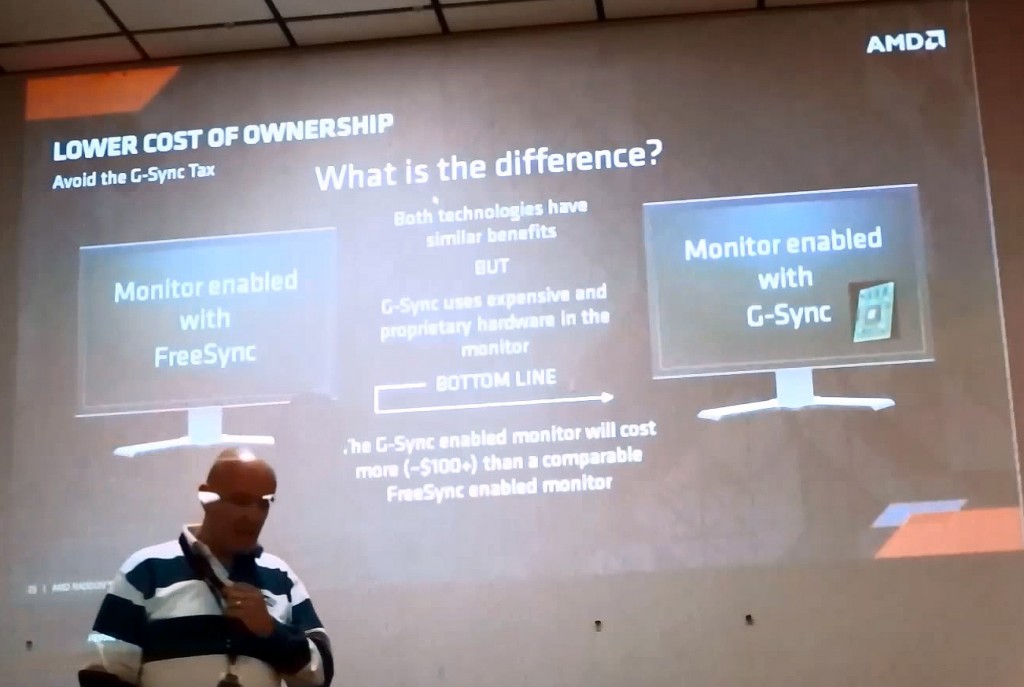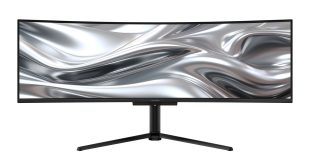One of the main advantages of the FreeSync technology that Advanced Micro Devices has been communicating for many months now is the fact that since FreeSync is based on open-standards and does not require custom hardware, monitors supporting the feature will not be too expensive. According to a new claim by AMD, when compared to displays featuring Nvidia Corp.’s G-Sync, FreeSync-enabled screens should cost more than $100 less.
Richard Huddy, gaming scientist at AMD, revealed at PDXLAN event this week that monitors featuring AMD’s FreeSync will ship in December, just like AMD’s drivers that support the technology, reports Legit Reviews. Theoretically, the first displays with AMD FreeSync technology can even make it to the market this December, but only in select regions and only in limited quantities. Expect mass availability of the first monitors with FreeSync in early 2015; wide availability of displays supporting the technology is still six months away, according to AMD.
VESA’s Adaptive Sync and AMD’s FreeSync technologies enable the display to dynamically match a GPU’s rendering rate, on a frame-by-frame basis, to produce a smoother, low latency, gaming or movie watching experience. This year the Adaptive Sync technology was incorporated into the DisplayPort 1.2a specification (previously it was a part of the eDP standard). To build monitors supporting Adaptive Sync and FreeSync technologies special display scaler chips are required. Major makers of scalers plan to start shipments of FreeSync-supporting chips in Q1 2015.
To enable displays that support Nvidia’s proprietary G-Sync technology, the graphics chip designer sells a special scaler to display makers. Since the solution is custom-built, it naturally is pretty expensive, which is why monitors supporting G-Sync are not really affordable (at least when their specifications are kept in mind). By contrast, AMD FreeSync-enabled displays should feature new industry-standard components, which will make them more than $100 cheaper compared to devices featuring Nvidia G-Sync.
The initial Project FreeSync-compatible scalers from MStar, Novatek and Realtek will enable display vendors to build monitors with FHD (1920*1080) and QHD (2560*1440) panels and up to 144Hz refresh rate as well as with 4K/UHD (3840*2160) panels with up to 60Hz refresh rate.
Not all AMD Radeon graphics cards support the company’s FreeSync. At present only AMD Radeon R7 R260/260X (Bonaire), R9 285 (Tonga) and R9 290/290X (Hawaii) support the technology. [yframe url='http://www.youtube.com/watch?v=C_3OAD-Dhs0′]
Discuss on our Facebook page, HERE.
KitGuru Says: It is interesting to note that AMD still does not talk about VESA’s Adaptive Sync technology, which should basically be free as it is a part of the DP 1.2a standard. In fact, if AMD and Nvidia supported Adaptive Sync, virtually all decent displays would enable tear- and lag-free gaming in a couple of years from now for absolutely free.
 KitGuru KitGuru.net – Tech News | Hardware News | Hardware Reviews | IOS | Mobile | Gaming | Graphics Cards
KitGuru KitGuru.net – Tech News | Hardware News | Hardware Reviews | IOS | Mobile | Gaming | Graphics Cards




Adaptive Sync is the hardware level protocol that AMD is using for ‘FreeSync’, AMD is just integrating it into their drivers. There is no AMD designed and controlled hardware (Aside from the GPU itself) involved, and FreeSunc would be impossible without Adaptive Sync. The comment at the end is completely wrong…
Some glad they said September of this year, now it’s Q1 2015, noting expected from AMD I guest.
PhoneyVirus
https://twitter.com/PhoneyVirus
https://phoneyvirus.wordpress.com/
I would have said that Adaptive-Sync is the VESA standard on the monitor. FreeSync (Trade Marked by AMD) is what AMD calls the provision for it on their card & drivers. Therefore, nVidia could provide for both G-Sync & Adaptive-Sync (but not FreeSync).
As for the “Free”; it does appear to cost about $200 extra, at the moment, while G-Sync costs $300 extra. There does appear to be some profiteering going on at the moment.